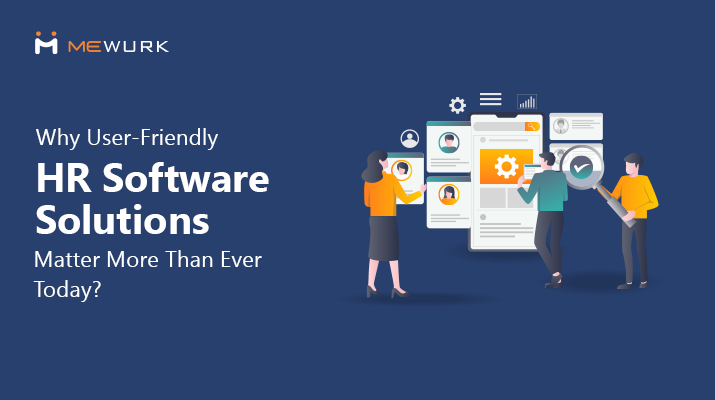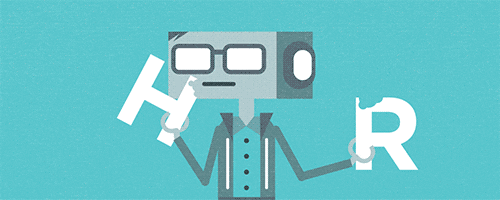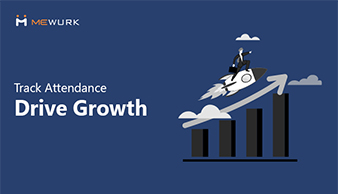
Why User-Friendly HR Software Solutions Matter More Than Ever Today?
Can you recall how HR software solutions or any business software looked in the 2000s? It was anything but user-friendly. They were cluttered, text-heavy, and required extensive training to navigate.
Functionality took precedence over user experience. Non-technical users could only struggle through complex menus, rely on IT support, or spend hours learning the system just to perform basic tasks.
Over the years, design thinking and usability have changed the entire landscape of software development. HR or non-HR software solutions that lacked intuitive, visually appealing, and accessible interfaces were either abandoned by users or became unpopular.
Today businesses are desperately trying to meet the demands of a dynamic workforce. To stay competitive and employee-friendly, they must adopt user-friendly HR software solutions, which are now a necessity rather than a luxury.
But why does user-friendliness matter so much in the HR and payroll software segment? And why is it more important now than ever before? This blog explores the key reasons behind it.
Key Changes in Cloud Based HR Software and HR Tech

To understand why businesses need to adopt user-friendly HR software, we first have to look at how HR tech is evolving. Here are some key changes we’ve seen in this space over the past few years.
The Shift from Administrative to Strategic HR
Traditionally, HR departments were seen as administrative hubs. They primarily focused on payroll, compliance, and record-keeping. But now, the role has expanded to cover broader and more strategic areas like talent acquisition, employee engagement, performance management, and workplace culture.
This digital transformation of HR is well-supported by SHRM, which highlights how technology is empowering HR teams to become key drivers of organizational growth and change.
This transition is made easier with user-friendly, cloud based HR software. From automating repetitive tasks to simplifying complex processes, these tools help HR teams shift focus toward strategic efforts that contribute to organizational growth.
The Move Toward Remote and Hybrid Work Formats

If remote and hybrid work formats were rare until recently, the COVID-19 pandemic changed that overnight. And we have more reasons to believe now that this change won’t be temporary and instead is here to stay. It opened new avenues for workforce management, such as the convenience of operating a business with employees spread across different locations.
However, to cater to this, businesses need to rely on more flexible and modern HR software solutions that are accessible, intuitive, and capable of supporting a distributed workforce.
The Demand for Employee-Centric Experiences
Modern employees expect seamless, personalized experiences in every aspect of their work lives—including HR processes. From onboarding to performance reviews, employees want tools that are easy to use and designed with their needs in mind.
This is where the user-friendliness of HR and payroll software comes into play. Such a solution can meet employees' expectations by offering features they prioritize, such as intuitive interfaces, employee-self-service options, and mobile accessibility. Beyond just boosting employee satisfaction, such a move also helps reduce the burden on HR teams.
The Push for HR Software for Small Business Operations
Before, most HR software solutions were built to fit everyone, which meant small businesses were stuck paying for features they didn’t really need, just like the big companies. But that’s changed now.
Today, there are solutions specifically built with small businesses in mind. They offer personalized features that can tackle the unique challenges these users face. There are HR software for small businesses tailored for different sizes, like those with 10 to 100 employees or 100 to 500 employees.
Key Features of HR Software for Small Business and Enterprise Use
When it comes to the key focus areas of interactive employee management software and the benefits, let’s break them down into three categories: first, enhancing the experience and interaction for employees; second, improving efficiency for HR teams; and third, providing powerful HR insights through clear data display.
Making the Employee Experience Better and Enjoyable
An HR and payroll software that is designed with employee experience in mind will have the following features and advantages:
Empowerment through Self-Service Options

One of the hallmarks of user-friendly cloud based HR software is its self-service capabilities. With these, employees can easily access their pay stubs, request time off, update personal information, and more. For none of these tasks, they are required to contact HR. Having a sense of control over these basic but important HR tasks can greatly enhance their job satisfaction level.
Faster Onboarding and Training
A smooth onboarding process sets the tone for an employee’s journey with the organization. User-friendly cloud based HR software simplifies onboarding by making its access easy and anytime, automating tasks, and guiding employees through each step. As a result, they become productive and engaged in less time.
Improving Efficiency for HR Teams
HR team efficiency is directly linked to the efficiency of the HR software solutions they use. Here's how technology makes their roles more efficient:
Automation of Repetitive Tasks
Whether you accept it or not, the time your HR team spends on repetitive tasks like data entry—tracking who is on leave, who will be on leave, managing leave records, generating daily attendance reports, and handling compliance reporting—is a waste of their valuable time. All of this could be automated with a more efficient and tailored HR software solution.
Improving Communication Flow
In every organization, HR departments serve as the vital bridge between employees and management. Even when different teams—like production and marketing—aren’t on the same page, HR steps in to bridge the gap and keep everyone working toward company goals.
The communication features built into HR software, including chatbots, notifications, and centralized dashboards, empower HR teams to maintain effective dialogue between employees and managers.
HR Insights Through Clear Data Display
HR software must present complex workforce data in easy-to-understand visual formats so that the relevant teams can easily identify important trends, rather than getting lost in the raw numbers. In this regard, two important areas that need special attention are real-time analytics and reporting and customizable dashboards.
Real-Time Analytics and Reporting
The HR software should be equipped with advanced features to generate real-time insights into key organizational metrics, such as employee turnover, engagement levels, and performance trends. Both HR professionals and business leaders should be able to access and interpret this data, suited to their specific roles and perspectives.
Customizable Dashboards
Different people in an organization need different information. Good HR software solutions should allow customizable dashboards to show the metrics that matter to each stakeholder. Whether you're an HR manager or an executive, you can easily have the insights you need.
Why User-Friendliness Matters More Than Ever Today for HR Software Solutions?
The following points outline why user-friendliness is essential for HR software today.
To Tackle HR's Growing Complexity
As your organization expands, your HR challenges are set to multiply at an exponential rate. All of a sudden, your focus should shift from managing local teams to overseeing remote workers across different time zones. For this, often you will be required to untangle a maze of international regulations. This is where smart, user-friendly HR software becomes your go-to.
Growing businesses need solutions that can scale
Your business isn't static, so why should your HR tools be? If you're currently a scrappy startup hitting your first growth spurt or an established enterprise expanding into new markets, you will soon be requiring HR solutions that can flex and adapt to your journey.
To Keep Your Workforce Happy and Driven

Just like the market is competitive, the talent landscape too is competitive. You can lose your star employees at any time for issues that you consider minute. Today's professionals are very much aware of their rights.
They expect workplace tools that facilitate their convenience and work-life balance. Your effort to empower them with intuitive and user-friendly HR software solutions can send a powerful message that you value their time and experience.
Wrapping Up
When your HR software solutions are a joy to use, the benefits ripple through your entire organisation. Tasks get wrapped up faster, your IT team isn't bombarded with "how do I..." questions and everyone can find what they need without digging through complex menus. It all comes down to one key factor—the user-friendliness of the software.
The takeaway here is: you can either invest in user-friendly HR tools that your team will actually look forward to using, or deal with frustrated employees and wasted time down the road. The choice seems pretty clear, right?
Most Popular Post

Why Accurate Attendance and Leave Management Matters for Business Growth?
Read More →Why Accurate Attendance and Leave Management Matters for Business Growth?
How To Leverage Attendance Data For Better Workforce Management?
Read More →How To Leverage Attendance Data For Better Workforce Management?




